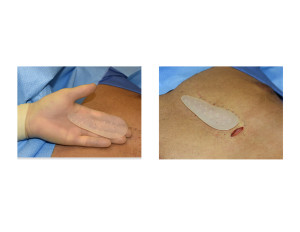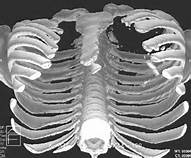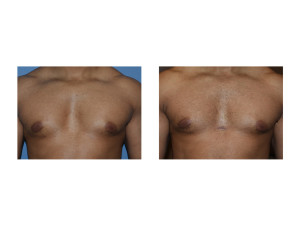The sternum, often referred to as the breastbone, is a long bone running down the middle of the chest. It connects to the ribs through a cartilaginous connection. The most common aesthetic deformity of the sternum is pectus excavatum. This is where the sternum and, to some degree, the attached ribs grow abnormally inward. This produces a well known sunken in appearance to the chest.
Pectus excavatum presents in a wide variety of manifestations. It can present as a relatively minor and isolated sternal depression to a much larger and even functionally limiting central chest concavity. While there are well known invasive treatments for pectus excavatum if significant enough (e.g., Nuss procedure), treatments for more minor sternal depressions are not as well chronicled.
Treatment options for lower sternal depressions include injectable fat grafting, injectable bone cements and custom sternal implants. While there are a large number of advocates for fat grafting, the sternum is a challenging area for fat survival due to the extreme tightness of the overlying soft tissues and the lack of natural fat in them. Multiple fat injection treatments would certainly be needed. Injectable bone cements are less well known and having used them, they offer permanent volume enhancement. But if any irregular contours develop or over correction occur, they can be hard to revise successfully.


Dr. Barry Eppley
Indianapolis, Indiana



